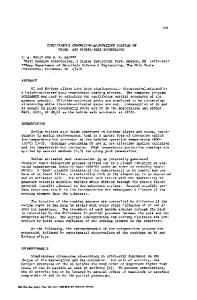Nickel monoaluminide coating on ultralow-carbon steel by reactive sintering
- PDF / 647,644 Bytes
- 8 Pages / 612 x 792 pts (letter) Page_size
- 61 Downloads / 350 Views
I. INTRODUCTION
AN intermetallic compound of nickel monoaluminide (NiAl) offers many advantages over conventional superalloys, according to Noebe et al..[1] (1) a higher melting temperature (1911 K[2]), (2) a lower density (about twothirds that of a typical superalloy[3]), (3) a specific Young’s modulus that is about 35 pct greater than the stiffest superalloys, and (4) a several-fold advantage in thermal conductivity. NiAl also exhibits excellent high-temperature oxidation resistance when doped with zirconium or hafnium and excellent high-temperature corrosion resistance when doped with chromium or yttrium, which are both superior to existing high-temperature alloys or coating materials.[1,4] Therefore, NiAl offers new opportunities for developing low-density and high-strength structural materials which might be used at temperatures higher than currently possible with conventional superalloys. We have studied the synthesis of intermetallics such as NiAl or MoSi2 by reactive sintering of mixed elemental powders and found that the increase in pressure applied during reactive sintering reduces the volume fraction of pores remaining in the synthesized intermetallics and that the addition of ceramic particles to the mixed elemental powders reduces the grain size of the synthesized intermetallics.[5–12] Throughout those studies, we have considered that when a compact powder mixture being in contact with a metal block is reaction-sintered, the metal block can be joined to or coated with the synthesized intermetallic compound. If the synthesis of NiAl and the simultaneous coating on a metal are feasible, one can produce a structural material with excellent high-temperature oxidation and corrosion resistance by a very simple process. In this study, we examine KIYOTAKA MATSUURA, Research Associate, NORITOSHI SUEOKA, Graduate Student, and MASAYUKI KUDOH, Professor, Division of Materials Science and Engineering, and KENICHI OHSASA, Associate Professor, Division of Molecular Chemistry, are with the Graduate School of Engineering, Hokkaido University, Hokkaido 060-8628, Japan. Manuscript submitted April 2, 1998. METALLURGICAL AND MATERIALS TRANSACTIONS A
the feasibility of an in situ NiAl coating on an ultralowcarbon steel by reactive sintering under a pseudo hot isostatic pressure. II. METHOD A. Experiment Carbonyl nickel powder of 99.8 wt pct purity and with a 5 mm particle diameter and gas-atomized aluminum powder of 99.8 wt pct purity and 100-mm diameter were mixed in a molar ratio of 1:1 with the addition of small amount of ethanol. The powder mixture was cold pressed into a cylindrical compact in a metal mold by applying an uniaxial pressure of 600 MPa. The diameter of the compact was 24 mm, and the thickness was varied from 1 to 15 mm. The compact was placed on a cylindrical block of an ultra lowcarbon steel to carry out the in situ coating test. The impurity elements in the steel were C 5 0.001, Si 5 0.008, Mn 5 0.01, P 5 0.002, and S 5 0.001 (in wt pct). The diameter and thickness of the steel block were 24 and 15 mm,
Data Loading...










